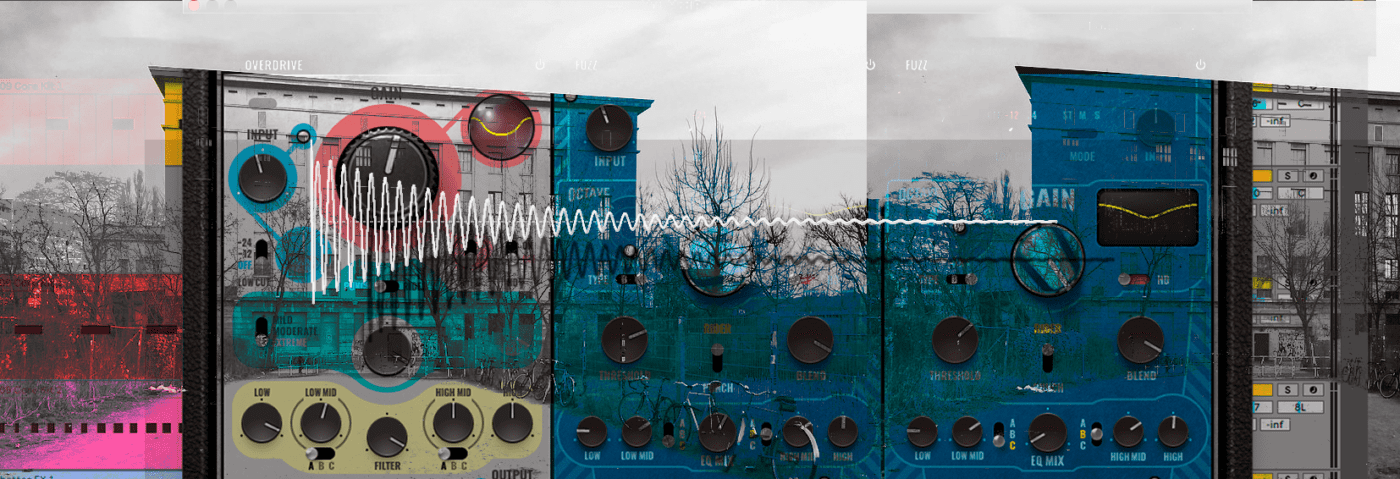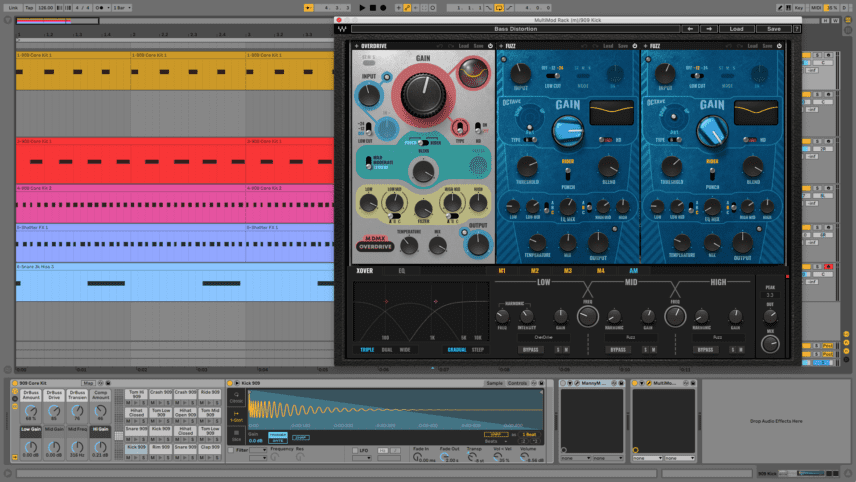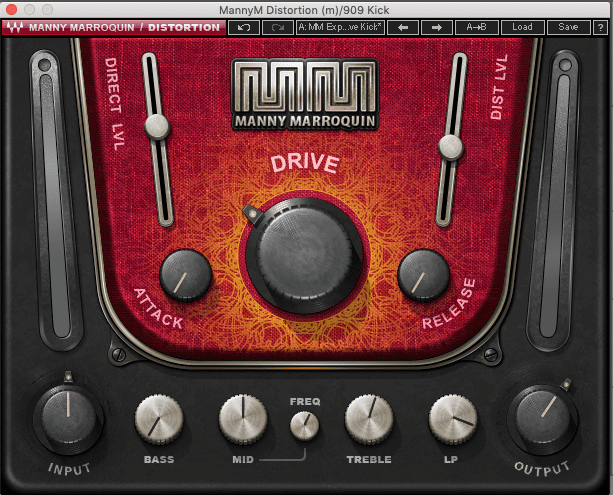Multiband distortion is a quick and powerful way to completely change the character of your sounds. In this tutorial, we show you how to apply it to a Berghain-style techno kick.
Dark room techno, Berghain techno, warehouse techno—whatever you want to call it, it’s a dominating force in dance music and it’s absolutely devastating. Key to its power is the kick drum, which sounds as if it’s simultaneously from far away and firing off impossibly close. It also pulls double duty, serving as both the anchor for the pounding rhythm as well as the bassline.
There’s a lot going on in Berghain kicks, from sub-bass weight to rolling delays and rumbling reverb, but in this piece, we’ll be focusing on distortion. We’ll be using a multiband distortion plugin to demonstrate how changes to the different frequency bands can yield dramatically different results, and we’ll also see how different types of distortion can completely change the character of the kick.
Before distortion:
With distortion:
Signal Chain
While the focus of this piece is not on how to build a Berghain kick from the ground up, it will be useful to briefly explain what’s going on with our kick channel.
We’ve started with a layer of two subby kicks put together in Native Instruments Maschine 2. We’ve used a combination of a sample and a kick made with drum synthesis. They’ve been tweaked a little in terms of drive and filtering but nothing too drastic. These are then squashed through Waves’ MultiMod Rack, set to saturate the kicks and help glue them together.
Here is the sub layer on its own:
The top kick layer is from a Roland TR-909, sourced from Ableton Live’s 909 Core Kit. It has been pitched down 8 semitones to give it some weight, and a little extra drive applied in the Drum Rack.
Here is the dry kick:
It then passes through a distortion plugin, more of which soon.
A chief component to Berghain-style kicks is reverb, and we’re using Waves H-Reverb for ours. We’ve placed it on a send channel to control the amount of the effect, although you could just as easily use it as an insert effect. This next passes through Waves’ H-EQ, with the high frequencies fairly aggressively cut to isolate the low and create that rumble. Lastly, the signal is processed by Waves’ MetaFilter, which adds a bit of movement to the reverb, with the LFO synced to the host BPM.
Multiband Distortion
What is multiband distortion? Multiband distortion separates the incoming signal into frequency bands and applies distortion to each band independently. You can also adjust the crossover points, or the places where the frequency bands overlap. Additionally, multiband distortion plugins often let you apply different kinds of distortion to each band, so you could squash the bass with overdrive, warm the mids with saturation, and obliterate the highs with overdrive, for example.
Because of its flexibility, multiband distortion is extremely convenient. You could conceivably create three separate send channels, each with an EQ to isolate the different frequency bands and then three separate distortion plugins placed after, but working with a single piece of software is much easier.
Here’s an example of our 909 kick processed with a traditional distortion unit, the Waves Manny Marroquin Distortion. While it sounds good and the plugin does have some tone-shaping controls, it can be difficult to dial in the kind of precision possible with a multiband distortion.
Let’s dive in and see what multiband distortion can do to our 909 kick. We’re not trying to find the best, single kick in this exercise, but experimenting to see how multiband distortion can be used to create a number of different effects. Click to see any image to see it larger.
Step 1:
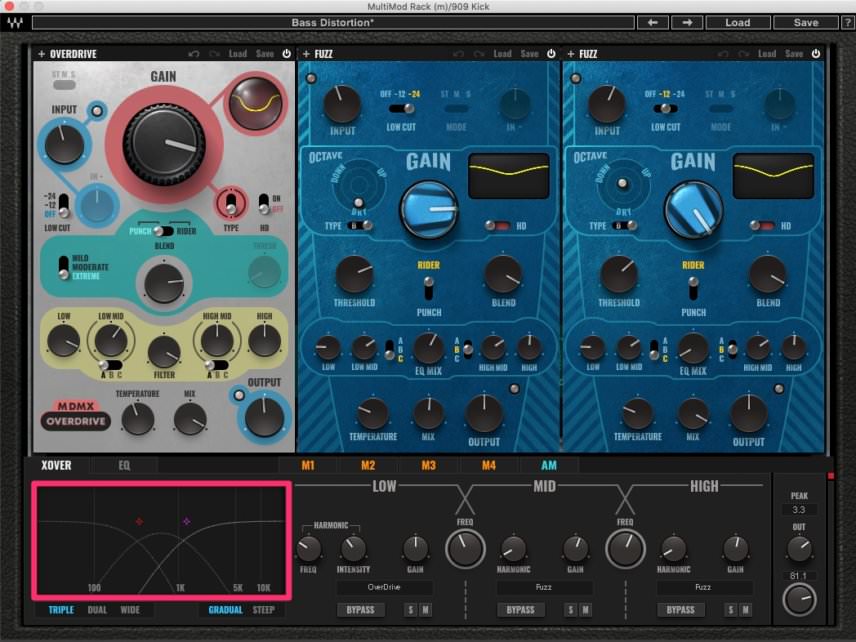
We place an instance of Waves MultiMod Rack across our 909 channel and load up preset Bass Distortion. The Fuzz units in the mid and upper-frequency bands add some nice sizzle but we’re interested in seeing what we can do with the lows. The Overdrive is sounding good but it’s a little too hot for our purposes. By adjusting the crossover point (the Freq knob) between Low and Mid, we can pinpoint exactly where we want to focus that distortion.
First we push it up and see how it sounds in the mid bass range.
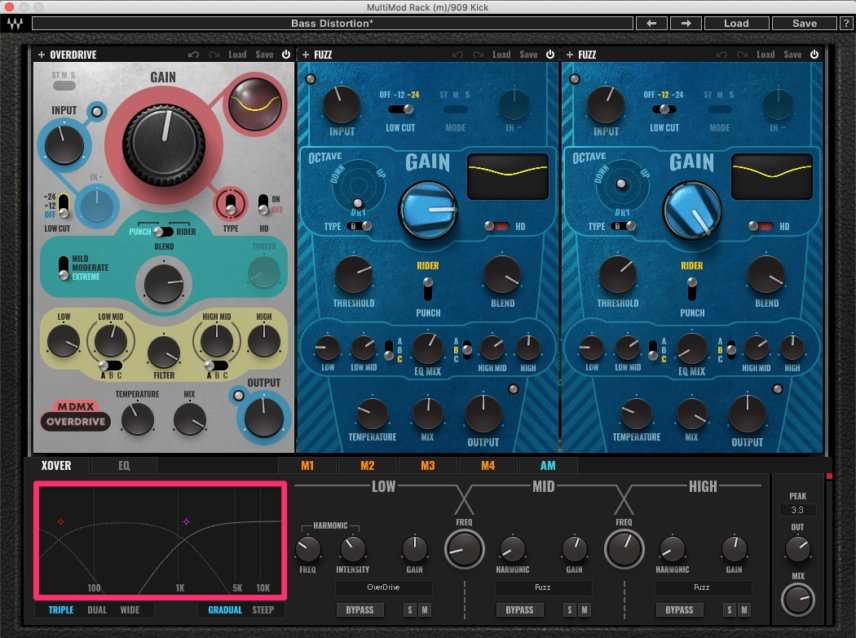
It’s not bad, but lowering the crossover down into the sub range sounds better to our ears. Our bass now has more definition and presence and stands out against the heavy subs of the Maschine kicks.
Step 2:
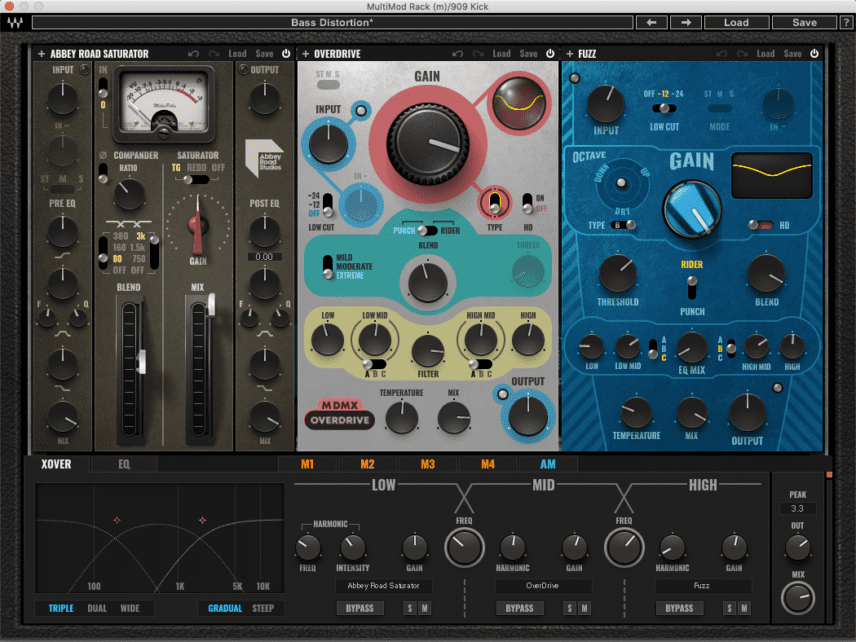
Let’s see how we can use crossovers to shape the mids. We swap the Overdrive unit into the middle section of the rack. The fuzz effect doesn’t sound good on the bass so we put in the Abbey Road Saturator instead, which thickens it up. Now the Overdrive is accentuating the mids and, because of the crossover point, also affecting some of the upper mids.
Step 3:
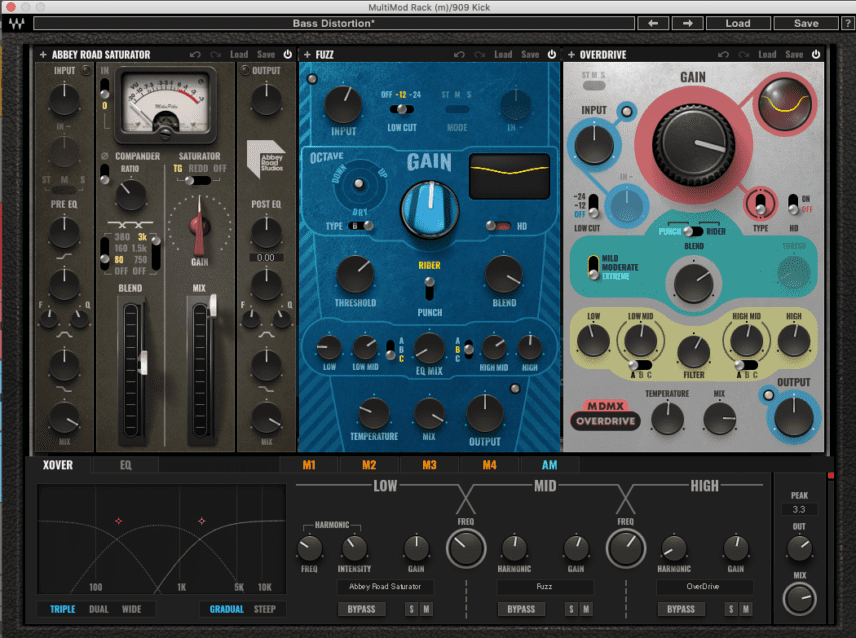
How will the highs sound overdriven? We switch the Overdrive and Fuzz so Overdrive is affecting the high frequencies. It sounds like we’ve blown our speakers and the cones are flapping in the bass breeze. We have lost some of our mid-frequency power though, although it’s nothing some further tweaking (or even another kick layer) wouldn’t fix.
Step 4:
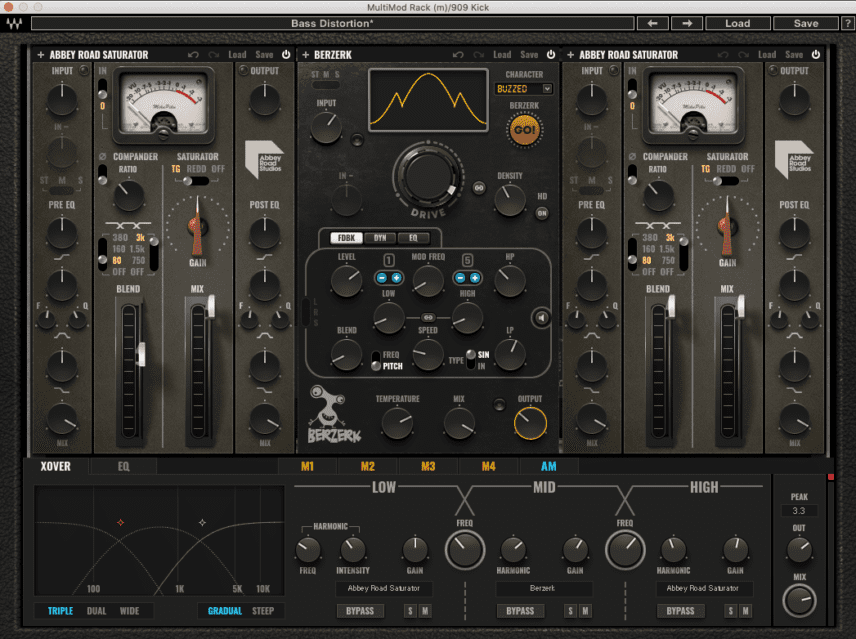
Multiband distortion is good for extreme and unusual effects as well. Let’s use it to create a pumping kick. This time we put Berzerk into the mids. It can add motion to signals thanks to its feedback section. We choose the Buzzed character preset and tweak the dials until our kick drum appears to pump. The highs get a massage courtesy of the Abbey Road Saturator. Remember, we’re only targeting the mids here, so the highs and (most crucially) the bass are unaffected.
Step 5:
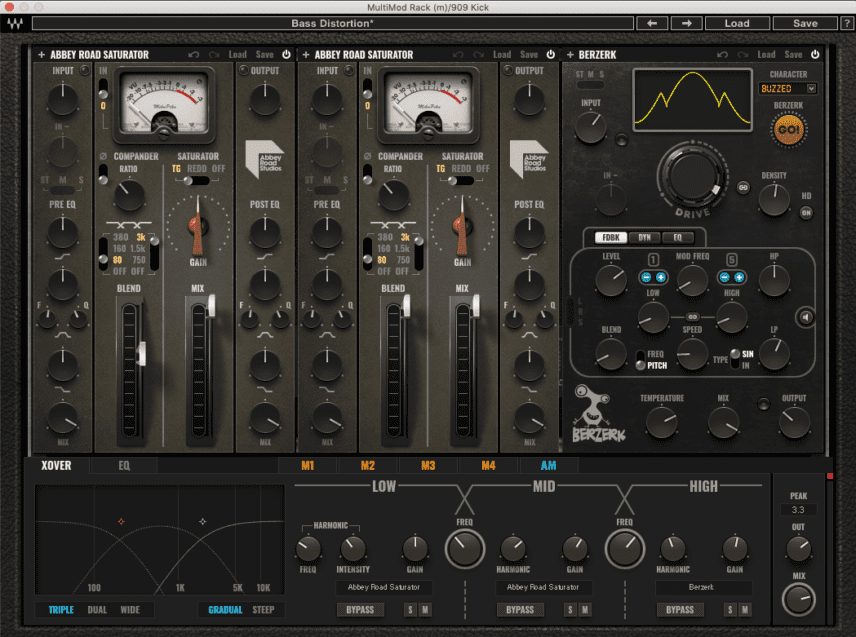
Let’s try the same pumping trick on the highs. We swap Berzerk and the right Abbey Road Saturation unit so now Berzerk and its unusual feedback feature is affecting the highs. We need to tweak the feedback settings a little to get it to sound right in the mix, but when it does, we’ve treated to a breathing, knocking kick drum.
Step 6:
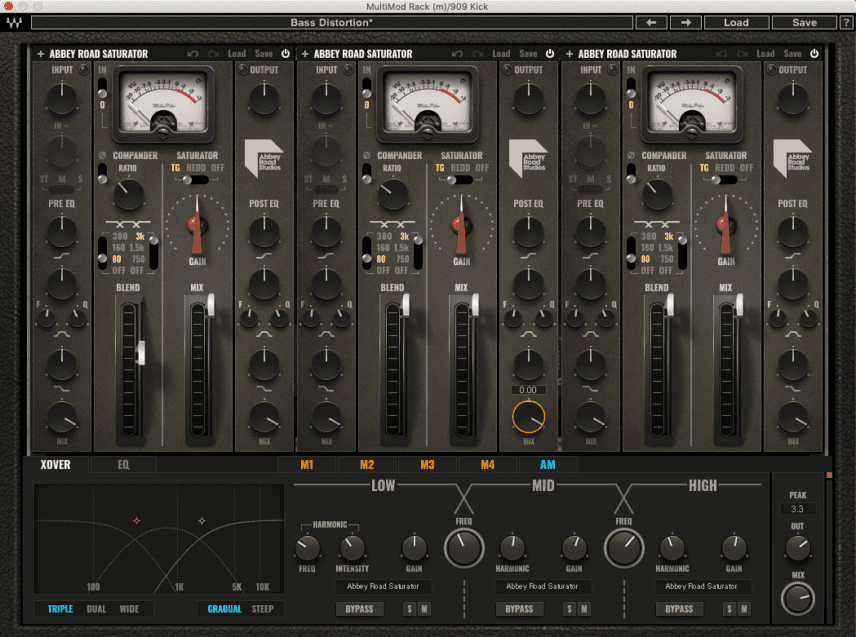
Lastly, let’s see how an application of all saturation will affect our kick. We remove the Berzerk unit and replace it with another Abbey Road Saturator. It doesn’t need many adjustments, just a little fine-tuning, and now our 909 kick is tight and punchy and stands out nicely from the sub layer.
And here is the final result with additional percussion. Multiband distortion was used throughout the piece to process and enhance the elements.
